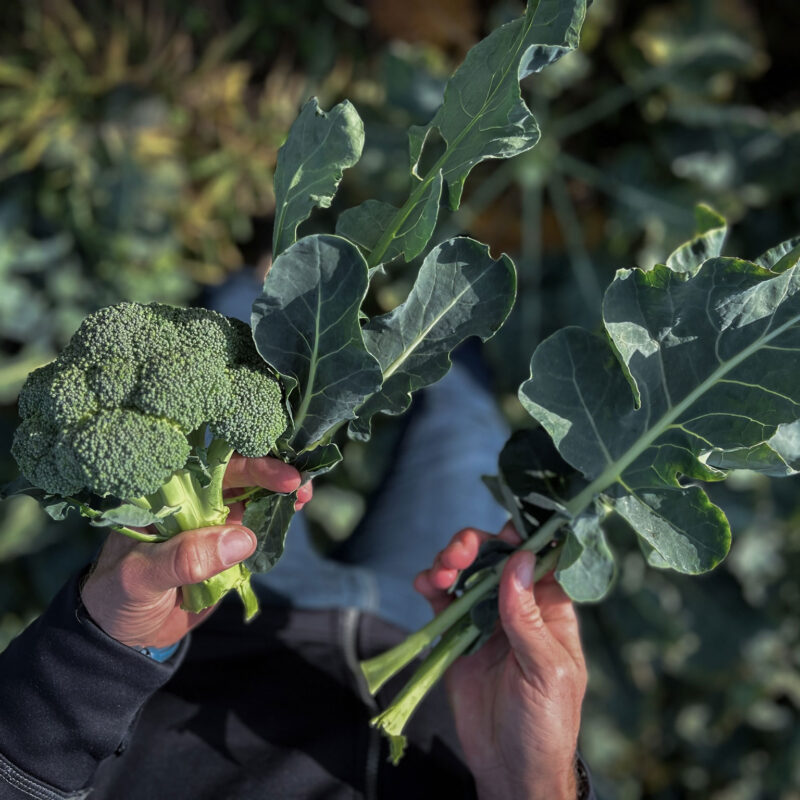Swedish Innovation Solves Mineral Challenge in Plant-Based Diets
2024.10.09

Photo: Mats Paulsson
A Swedish innovation project involving Axfoundation, MatLust Development Node / Södertälje Municipality, Hidden in Grains and Warbo kvarn has achieved a breakthrough that could revolutionize plant-based diets. By optimizing hydrothermal treatment technology, minerals such as iron and zinc in grains have become almost as available as those in meat. This technology is currently being tested on a large scale in products like Råggyberry and Swedish bulgur made from barley.
“Almost everyone would benefit from eating more whole grains. That’s why the market needs readily available products that are both tasty and sustainable, allowing us to more fully absorb all the nutrients from whole grains,” says Veronica Öhrvik, Nutrition expert and Project leader at Axfoundation.
Hydrothermal Treatment – A New-Old Technique Solving a Global Problem
The Swedish Food Agency recently proposed updated guidelines encouraging increased consumption of whole grains and limiting red meat intake to a maximum of 350 grams per week. One barrier to this transition is that minerals in meat are easier for the body to absorb than minerals, like iron and zink, in grains. This has been a significant challenge for researchers, as 25-30% of girls and young women are at risk of iron deficiency, and people who avoid meat generally have lower iron levels.
The Mineral Shift project has now demonstrated that hydrothermal treatment can break down up to 99% of phytic acid, an antinutrient that binds minerals in grains. This process makes up to almost four times more iron and zinc available for absorption by the body, according to the report “Next Generation Whole Grain Products – A Mineral Shift for Health and the Planet.”
“In practice, this means there’s more iron available from a portion of whole grain pasta with tomato sauce than from a standard portion of pasta and meatballs,” explains Veronica Öhrvik from Axfoundation.
Hydrothermal treatment is an ancient method, optimized by the researchers behind Hidden in Grains, to release minerals in grains like wheat, barley, and rye.
“The results show that not only are the grain products flavorful and easy to use, but we can also enhance the nutritional value of grains with minimal climate and energy costs,” says David Fredlund, CEO of Hidden in Grains and head of technological development.
Future Foods in Stores in 2024
As a first step into the consumer market, the snack Råggyberry, made from hydrothermally treated Swedish chopped whole grain rye with a fruit and berry compote, is now being tested. The innovation was developed at Torsåker Farm by Axfoundation in collaboration with a wide range of stakeholders, from mills to retailers.
“This is a great example of how minerals can be significantly more available from grain products, making it easier for more people to eat sustainably without compromising on nutritional content. Wholegrains are among the most sustainable foods we can eat, and Sweden has significant production capacity,” adds Veronica Öhrvik of Axfoundation.
During October and November, Råggyberry will be available in select Axfood stores, including Hemköp, Willys, and Urban Deli. Additionally, hydrothermally treated Swedish bulgur from barley is available for food service via Martin & Servera and Menigo, and for consumers through Warbo Kvarn, among others.
A Collaboration for Public Health and Sustainable Food Production
The Mineral Shift project, which began in 2021, is led by MatLust Development Node in collaboration with Axfoundation, Hidden in Grains, and Warbo Kvarn, with funding from Sweden’s innovation agency Vinnova. The goal has been to solve the mineral absorption issue in the shift toward more plant-based diets and to develop the next generation of flavorful and healthy whole grain products using barley, rye, and wheat. This week, the results report from the Mineral Shift was released.
Facts about Grains, Minerals, and Hydrothermal Treatment:
- Optimized hydrothermal treatment of grains can break down 99% of phytic acid, making up to four times more iron and zinc available for absorption. (Mineral Shift Results Report) This means that almost as much iron and zinc are available from whole grains as from meat (Nutritionsfakta)
- One of the most important changes for the planet and health is to reduce meat consumption and eat more plant-based foods, including more whole grains and legumes (EAT-Lancet).
- Nine out of ten people in Sweden consume less whole grain than recommended (The Swedish Food Agency).
- Swedes’ consumption of red and processed meats is significantly higher than recommended (The Swedish Food Agency, The Public Health Agency of Sweden).
- Grains, along with legumes, are an important source of plant-based protein and contain essential minerals (The Swedish Food Agency).
- The amount of grain products consumed by Swedes contains more iron than the amount of meat, fish, eggs, and dairy consumed does? (The Swedish Food Agency).
- Minerals in grains like wheat, rye, oats, and barley are bound to the antinutrient phytic acid, making them difficult for the body to absorb (Nutritionsfakta).
- Other factors affecting iron absorption include the body’s need for iron, the form of iron present, the presence of other nutrients, and the so-called “meat factor” in meat and fish that enhances absorption (The Swedish Food Agency).
- Hydrothermal treatment involves soaking grains under specific time and temperature conditions. This process activates the grain’s natural enzymes, or “tricks” the grain into thinking it’s spring, prompting it to release its stored nutrients.
Download the Mineral Shift report (PDF)
Learn more about the Mineral Shift: https://www.axfoundation.se/en/projects/the-mineral-shift-bioavailability
Download image of a plate with pasta and meatballs as well as pasta and tomato sauce Photographer: Mats Paulsson
Download image of hydrothermal treatment at Torsåker farm’s
Download image of Veronica Öhrvik
Download image of David Fredlund
Contact:
- Viveka Risberg, Communications Manager, Axfoundation, +46 72-518 00 95,
- Veronica Öhrvik, Project Manager for Future Food, Axfoundation, +46 73-055 38 51,
- David Fredlund, CEO of Hidden in Grains, , +46 70-832 69 87












































































